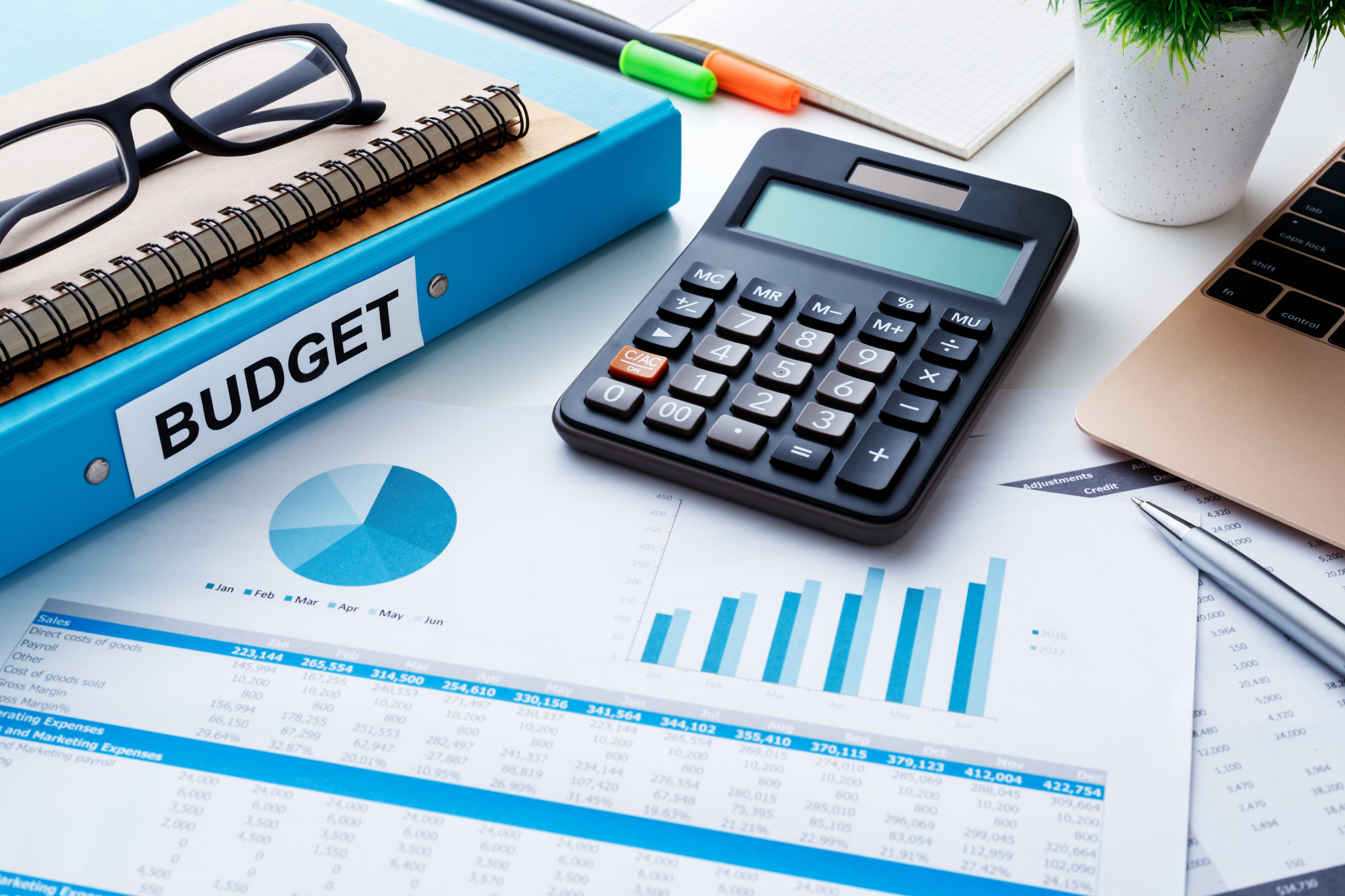Content marketing seeks to get to the forefront of your ideal client’s mind, understand their needs, and create content that meets those needs to draw and guide prospects through to the sales funnel.
However, if a client is looking for more information about a particular issue and you’re trying to bombard them with in-depth content on your product, they’re more likely to leave. It’s the same when they cannot find details about your product while trying to find it.
That’s what content mapping is for — It helps to create content that aligns with your clients’ desires. What exactly is it, and how do you make the content maps you want to create?
We’ll discuss a “content map” and its importance, as well as a thorough guide to creating a practical content map for your company.
What is a Content Map?
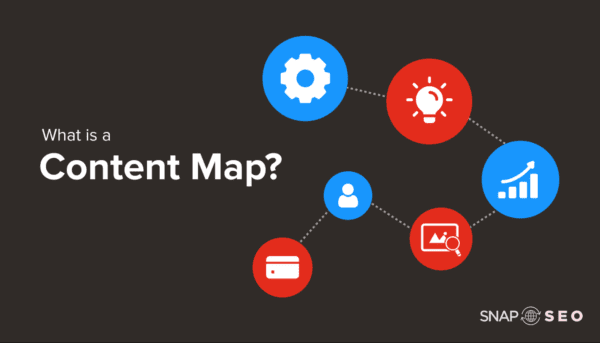
A content map provides an approach to providing the appropriate information to your audience at the right moment. Content mapping can also help evaluate your current strategy for content and uncover areas of need or opportunities.
It is possible to use an interactive content map to help guide the customer’s journey from a casual reader to a potential purchaser and eventually paying customer. Providing appropriate content for each step of this process can help you generate leads and nurture them efficiently.
To do it correctly, it is essential to begin by analyzing and understanding your audience. That’s why most content maps start by defining the audience you want to target with at least one of the “personas.”
Personas of the buyer
A buyer persona is an ideal customer of your service. The persona you create is fictional, but it provides valuable information which can help you make more appealing content for your customers.
You generally employ surveys and interviews with current customers to build the persona. If you’re still not at that point yet, you may conduct market research and talk to prospective customers.
A good persona will help you address the customer’s pain points and cater to their needs and behaviours.
Lifecycle stage
The next step is to develop content for each phase of the buying process. Have they recently discovered your business, or are they near purchasing your product? Content will be created for each scenario to help buyers along the right path.
There are three stages of the buyer’s lifecycle:
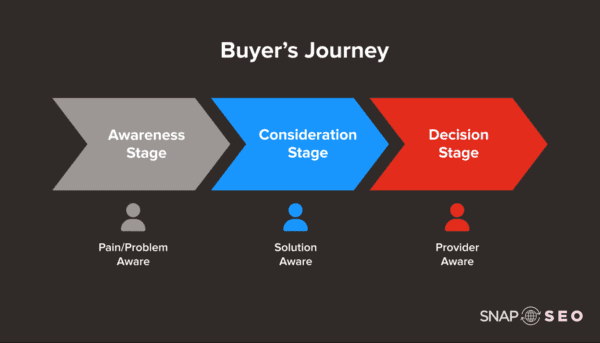
- Awareness: In this stage, an individual has begun to look for a problem your product may be able to solve.
- Consideration: Here, it is clear that the user has identified the opportunity or issue.
- Decision: In this stage, the individual has determined what they’ll do to resolve an issue or profit from an opportunity.
If, for instance, you’re selling smartwatches for sale, a buyer in the awareness phase recognizes that they have the chance to become healthier. In the consideration stage, they realize that keeping track of their activity and steps can help them reach this target. In the decision phase, they know that a smartwatch can be an ideal device.
Combining these two elements can allow you to create a practical content map that draws customers into the fold, keeps them interested and motivates them to buy.
Usually, the content mapping process is performed by the head of the content program. It can be the Content Director, marketing manager, content strategist, or the leader of the content marketing team.
The advantages of content mapping
Companies should use a content map to help them better understand their clients and increase the effectiveness of advertising and content marketing. Let’s have a look at the many benefits of this:
- Learn to understand your customer
When creating the content map, you must examine and comprehend the customer journey. This helps you learn their motives, challenges and questions about your service or product. When you understand these elements and analyze them, you can improve the marketing strategy you employ. You may also discover issues or issues your consumers have with the product. - Provides an overview of content
To create a content map, you need to audit your existing content. This gives an overview of all your content. You can build a central catalogue or content library. A library where you can see all published content helps you avoid repeat topics and identify new ideas. - Maximize content benefits
Each piece of content has to serve a specific purpose using a content map. It will ensure that you’re not creating unnecessary content that will have minimal or no impact on the people who read it. A content map makes sure that you only write relevant content. - Help customers navigate the sales funnel
You’ve got a clear and concise plan for your content strategy to guide customers along the sales funnel. A content map can help you create engaging content for potential customers and leads, allowing them to grow to become customers. Creating content that nurtures existing customers to build loyalty and encourage repeat customers is possible. - Save time and money
Without a content map, you’re probably just making content using random keywords and results found on search engines. This isn’t effective because it doesn’t address your clients’ real needs and desires. The result is a lot of content that serves no function. With a content map, you can save time and cash by making personalized and targeted content pertinent to your target audience. Your content will result in results, not just adding content to your site and the feeds on social networks. - Mix content with marketing channels
A content map provides insights into your strategy for marketing content. Instead of posting the same content across every channel, you can adapt different types of content with the platform they’re suitable for. Utilizing the appropriate content types can boost your content marketing efforts.
How do you create an efficient content map?
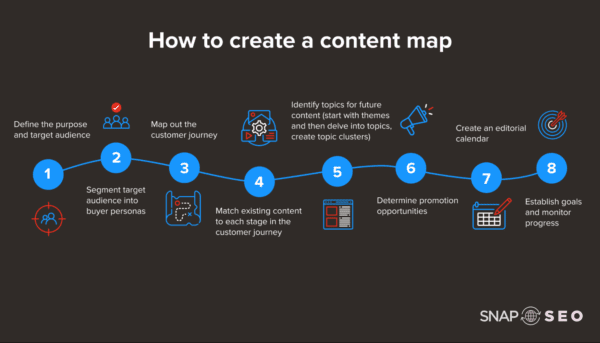
1. Determine the goal and audience
Before creating a content map for a particular content marketing campaign, you must be clear about the campaign’s reasons and who it serves.
Review your content marketing plan and note the business purposes or goals this campaign will achieve. The goals could be increasing the number of subscribers, convincing readers that they need this item or service, establishing an audience of loyal readers, and driving sales.
In the next step, explain how the content marketing strategy can benefit the people you want to reach. If your ideal market includes “casual runners aged between 30 and 40 years,” you must look into the problems your product will address or the potential opportunities it might provide.
These two aspects will help guide your strategy for content marketing and are essential to creating your content maps.
2. Segment the target audience into different buyer personas
Conduct a thorough investigation of your audience’s needs to know their interests and worries. To create content that addresses all aspects of the above, first, you need to know the audience.
You can use customer surveys, in-depth interviews, website analytics, and social media metrics to gather data. Use this data to define:
- Common traits that groups of clients share are age, work and income, interests and a preference for creators or sites.
- What makes them attracted by your products
- What did they want to accomplish with your product
Utilize this information to divide your readers into various buyer personas. You can develop one or two, or even 20+ personas, based on the demographics you’re trying to get in touch with. Hubspot estimates that the use of three different segments of the audience will be the most popular.
Here’s a basic buyer persona:
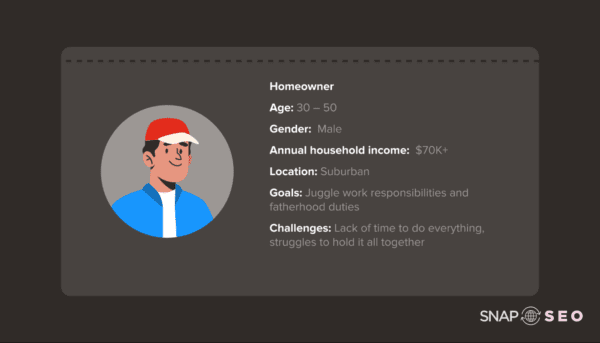
- Demographics: Location Age, Gender, Education, marital status
- Professional job description: Job title, industry and income
- Personal information: What their professional and personal goals are, their personality traits, and their lifestyle
- Issues: Pain points, frustrations, personal or professional problems
- Influences: Favourite books, tv shows, blogs, influencers
- Habits of shopping: Online shopping or in-person shopping, where they shop, whether they purchase on their own or with other people (such as spouses), what they’re prepared to pay and the factors that could prevent them from buying
Using buyer personas to create an individual brand story is also possible. This narrative explains to readers why your brand was created, what it does, and the benefits it can bring to your customers.
3. Map out the customer journey
Learn about the decision-making process for your customers by providing steps they take in their purchasing journey. Use personas as a reference to show a buyer’s journey to making a purchase.
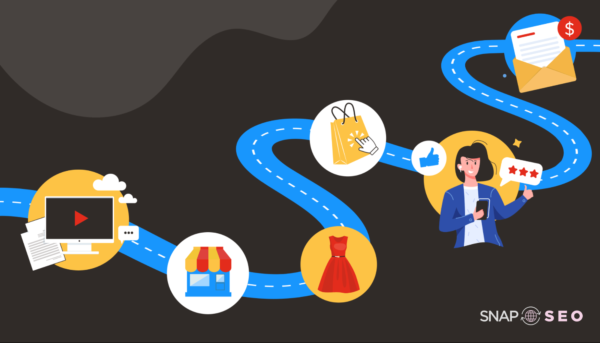
To design a journey for your customers, look at their emotions and thoughts, how you can aid them, and what content will benefit them.
If you’re planning a customer journey for a store selling premium sneakers, your buyer personas will likely include sneakerheads collectors and wealthy customers. They all visit your store with the same intention – to purchase sneakers; however, their expectations and journeys to buy are entirely different.
A sneakerhead would like to get to grips with the most recent shoes within a budget quickly, a wealthy buyer purchases sneakers to match their outfit, regardless of cost, and a collector is looking to purchase specific shoes that can be stored and resold in the future.
Knowing their journeys can make it much easier to develop content that offers them actual value.
4. Match existing content to each stage in the customer journey
Review your existing content and develop your catalogue. The catalogue should be divided into the three phases of the buyer’s lifecycle: awareness, consideration, and decision. Next, assign each item to one of the categories.
In the awareness stage, also known as the “top of funnel” (TOFU), there’s informative content that can help the user who recently discovered a problem but isn’t aware of the fact that you can solve the problem.
In the consideration stage, also known as the “mid-point of funnel” (MOFU), the content should be focused on the product. Users who have conducted studies are at this stage and are aware of their issues and possible solutions. Make them comfortable using your product with instructions, examples, and other information.
In the Decision phase, also known as the funnel’s bottom (BOFU), the customer has already decided to purchase your product. Anything that shows you are the best choice, like customer testimonials, success stories, and case studies, falls into this category.
According to the report of SEMrush, 95% of marketers produce TOFU-based content. 86% create MOFU content, and 76% produce BOFU content.
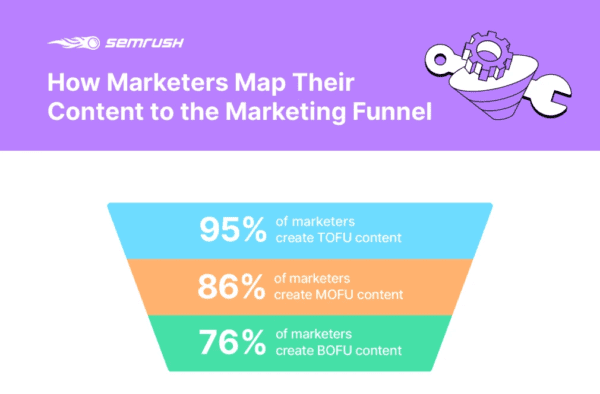
You can make your stages that match the journeys of your customers. Dividing each item of your catalogue into stages and you’ll discover:
- It is a redundant piece of content
- Some content doesn’t fit any stage and therefore is useless
- There are content inconsistencies
- New opportunities are emerging
5. Identify topics for future content
After you’ve reviewed your content’s current state and analyzed your existing content, you can begin to develop an outline of your content to ensure future success. Make use of the knowledge gained from the previous steps, like the challenges faced by customers and the content gaps, to discover new content topics.
Begin by listing the main themes you could cover. These are the primary subjects and utilize these topics to form topic clusters.
Within a topic cluster, the primary topic is the most important one. Create the content pillar of the topic, which is lengthy and contains sub-topics. Then, you can create distinct pieces for each sub-topic.
Conduct keyword research about the primary subject and sub-topics to create an efficient topic cluster.
Use the topics to choose the type of content you want to create. For instance, 53% of marketers believed that webinars were the format that brought in the highest-quality leads by 2021.
6. Create a promotion strategy
You must get attention for the content you’ve written. To do this, you have to market the content. The most common strategies for the promotion of content are the use of search engines along with social media-based marketing.
Other options include emails, guest posts, paid social media advertisements, and sponsored content.
The best promotion method depends on the kind of content you want to promote, your budget and the platform your audience uses the most and the level at the context they are using it. Most marketers utilize their budget to begin an advertising campaign for paid content and then work on organic growth.
Promotion methods may differ for different stages of the buyer’s journey. For instance, social media platforms may heavily influence the awareness stage, while the decision and consideration stages rely heavily upon search engine results.
If you’re looking to increase your position on search engines (SERPs), result in pages for the most important keywords, and simplify content distribution, look into Snap Managed SEO.
7. Make an editorial calendar
Utilize the editorial calendar as a way to organize the details from the previous points. Write down due dates and publish dates, and note each piece’s content type, the location it will be published, and the author for each piece of content.
In the case of online calendars such as Google Docs or a calendar that is integrated into your project management software, it is possible to use the colour and symbol to signify various publishing avenues and types of content.
You can also make multiple calendars to create different content schedules for every stage of the buyer’s lifecycle.
The editorial calendar may be a simple list of deadlines, task names, and columns to record the content’s details, such as keywords, buyer personas, pages to hyperlink to, and so on.
8. Set goals and evaluate the progress
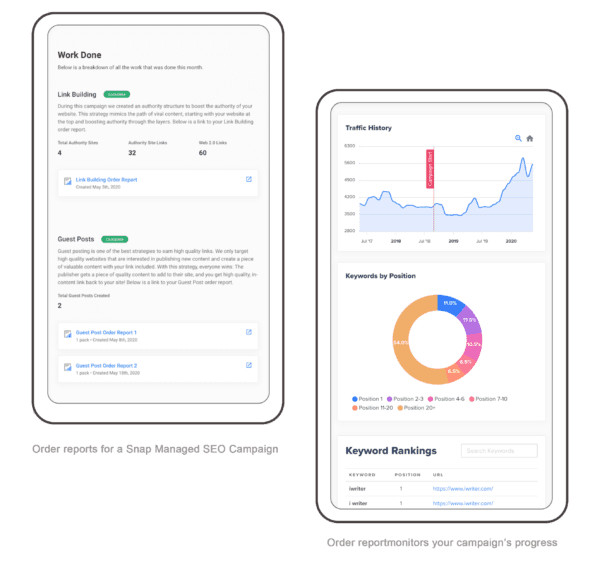
Examine if your Content Map is effective by monitoring your marketing campaign’s performance. The SEMrush 2020 survey revealed the most popular metrics for every funnel step.
The most important measures for each stage included:
- TOFU – number of visits and conversion rate
- MOFU – conversion rate and the number of leads
- BOFU – conversion rate, amount of payments, and total revenue
Use a tool like Google Analytics to track web metrics and conversions. Accurate data can show errors in your current content map and what you need to do to improve it.
Set milestones for your content map to measure its performance. For instance, your goal could include “Generate 350 organic leads in the next six months.”
Content types that are appropriate for each stage of the life cycle
A significant part of the map you create for your content depends on the types of content. Here are the most effective types of content for each stage of the buyer’s lifecycle:
Awareness
This stage’s purpose is to give customers specific details about the problem or opportunity they have just discovered they were missing. This stage is where you can utilize:
- Long-form blog posts
- eBooks
- Tool guides
- Videos
- Webinars
- Infographics
Every piece of content needs to be educational and valuable for the reader and does not always require an intense focus on your brand.
Consideration
This is where you can present your product and explain how it can resolve customer issues. Customers in the process of considering are looking into their options, and you can guide them towards your product by:
- Comparative guides as well as “versus.” posts
- Case studies
- Whitepapers
Decision
Customers are ready to make a purchase decision. Therefore, you must be able to promote your products or services effectively. You can persuade them to purchase by making use of:
- Testimonials
- Reviews
- Trials for free
- Demos
- Pages for landing
- Retargeting ads
- Late-stage FAQs
- Coupons
- Consultation is available
This is a general guide to help you get to the right place. The types of content on your content map will mostly depend on your targeted persona and their preferences.
Conclusion
Content mapping can boost your marketing efforts on the internet and assist you in reaching your objectives.
By laying out a detailed description of the content you must create and the reason behind each piece, types of content and publishing platforms, you will be able to cater specifically to the ideal audience. This targeted marketing could result in more conversions and improved customer relations.




